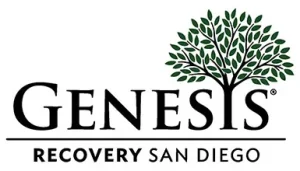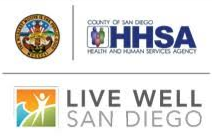At the most basic level, Alcoholics Anonymous (AA) is a large network of small groups who use the 12 steps as a guide to overcome alcoholism and live sober, happy lives.
There seems to be a lot of mystery around what Alcoholics Anonymous is, what it isn’t, and how AA works.
While movies, books, and other media portray the fellowship and the steps with a hint of skepticism mixed with mystery, AA and the way it works is more simple and (some would say) dull than people outside of AA would believe.
What is Alcoholics Anonymous
Alcoholics Anonymous is a worldwide fellowship of men and women who gather at informal meetings and follow certain principles that are designed to help people live sober without the need to use alcohol or drugs. According to the AA Information page:
Alcoholics Anonymous is an international fellowship of men and women who have had a drinking problem. It is nonprofessional, self-supporting, multiracial, apolitical, and available almost everywhere. There are no age or education requirements. Membership is open to anyone who wants to do something about his or her drinking problem.
It was founded in 1935 by Bill W. and Dr. Bob in Cleveland, Ohio. It began slowly with the two men who, after they got sober themselves, went to a local hospital and began helping a third man get and stay sober. Since then, Alcoholics Anonymous has grown to a global movement where one member of AA helps another person achieve sobriety.
Today, many drug rehabs and alcohol treatment centers require their patients to attend AA meetings regularly and are encouraged to find a sponsor.
How Does AA Work?
There are two ways to think about AA – How it works for an individual, and how it works as a group. For the individual, AA works through the 12 Steps. Similarly, the individual groups and meetings follow the 12 Traditions. Together, these two sets of guiding principles have ensured that AA remains completely unaffiliated and effective as a means to treat and overcome alcohol addiction.
When someone wants to quit drinking and decides to check out an AA meeting for the first time, they’re sure to be slightly confused and unsure of what to expect. Meetings vary group by group, but the majority of them will have a few things in common.
There will be a secretary (someone who "runs" the meeting), a leader (who begins the sharing), and then the rest of the attendees. AA meetings typically either last for an hour or an hour and a half. There are some readings, and then people take turns sharing their experience, strength, and hope. Afterward, some people talk, some go get food. Others stay and clean up and still more talk about how to stay sober and live meaningful lives.
It’s really that simple. It’s so simple, that a journalist in 1941 couldn’t believe that Alcoholics Anonymous was as simple and altruistic as it claims to be. And it remains the same ever since.
The 12 Steps of AA
To be a member of AA, all that is required is that a person suffers from alcoholism - it's one of the traditions (which will be detailed below). However, most members also go through the 12 steps, which are used to recover from the disease of mind and body.
- We admitted we were powerless over alcohol—that our lives had become unmanageable.
- Came to believe that a Power greater than ourselves could restore us to sanity.
- Made a decision to turn our will and our lives over to the care of God as we understood Him.
- Made a searching and fearless moral inventory of ourselves.
- Admitted to God, to ourselves, and to another human being the exact nature of our wrongs.
- Were entirely ready to have God remove all these defects of character.
- Humbly asked Him to remove our shortcomings.
- Made a list of all persons we had harmed and became willing to make amends to them all.
- Made direct amends to such people wherever possible, except when to do so would injure them or others.
- Continued to take personal inventory and when we were wrong promptly admitted it.
- Sought through prayer and meditation to improve our conscious contact with God as we understood Him, praying only for knowledge of His will for us and the power to carry that out.
- Having had a holistic awakening as the result of these steps, we tried to carry this message to alcoholics and to practice these principles in all our affairs.
The 12 Traditions of AA
Just as the 12 Steps help keep the individual sober, the 12 Traditions are designed to keep the group healthy.
- Our common welfare should come first; personal recovery depends upon A.A. unity.
- For our group purpose there is but one ultimate authority—a loving God as He may express Himself in our group conscience. Our leaders are but trusted servants; they do not govern.
- The only requirement for A.A. membership is a desire to stop drinking.
- Each group should be autonomous except in matters affecting other groups or A.A. as a whole.
- Each group has but one primary purpose—to carry its message to the alcoholic who still suffers.
- An A.A. group ought never endorse, finance, or lend the A.A. name to any related facility or outside enterprise, lest problems of money, property, and prestige divert us from our primary purpose.
- Every A.A. group ought to be fully self-supporting, declining outside contributions.
- Alcoholics Anonymous should remain forever nonprofessional, but our service centers may employ special workers.
- A.A., as such, ought never be organized; but we may create service boards or committees directly responsible to those they serve.
- Alcoholics Anonymous has no opinion on outside issues; hence the A.A. name ought never be drawn into public controversy.
- Our public relations policy is based on attraction rather than promotion; we need always maintain personal anonymity at the level of press, radio, and films.
- Anonymity is the holistic foundation of all our Traditions, ever reminding us to place principles before personalities.
If you need help finding AA meetings or other recovery resources in San Diego county the team at Genesis Recovery can help. At Genesis Recovery, we believe participation in a 12-Step Program is imperative for permanent recovery from drug and alcohol addiction.
Our established alliances with the 12-Step fellowships throughout our county expand the pool of experience, strength and hope to countless others who can relate to the struggles you are facing and on the same path to permanent sobriety. Call our offices for more information.

